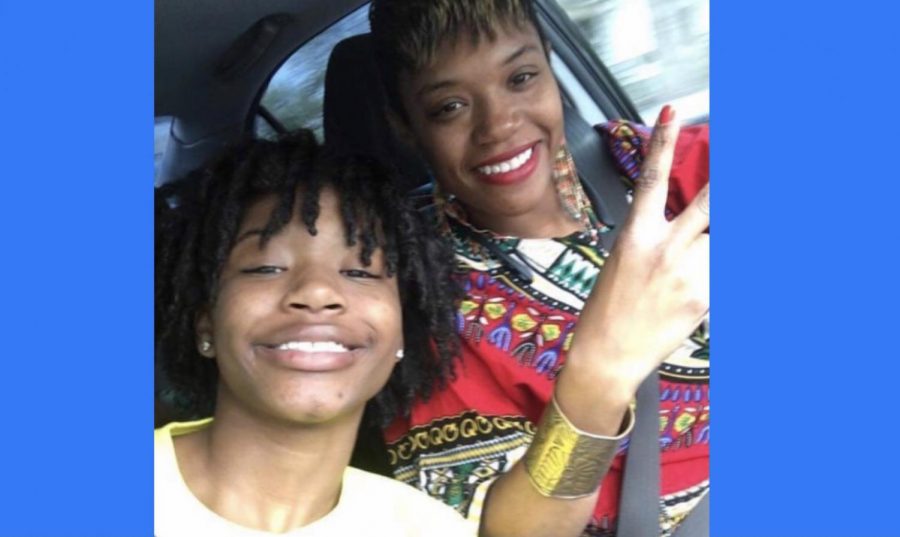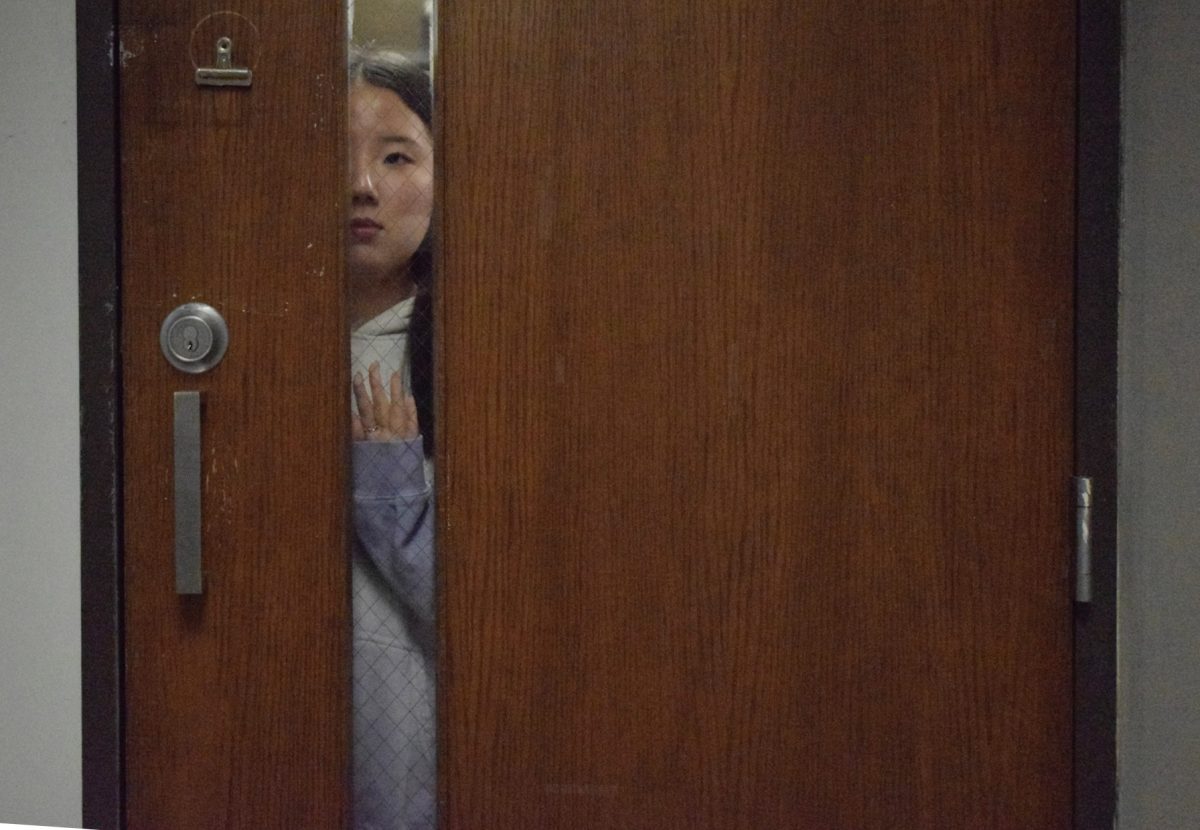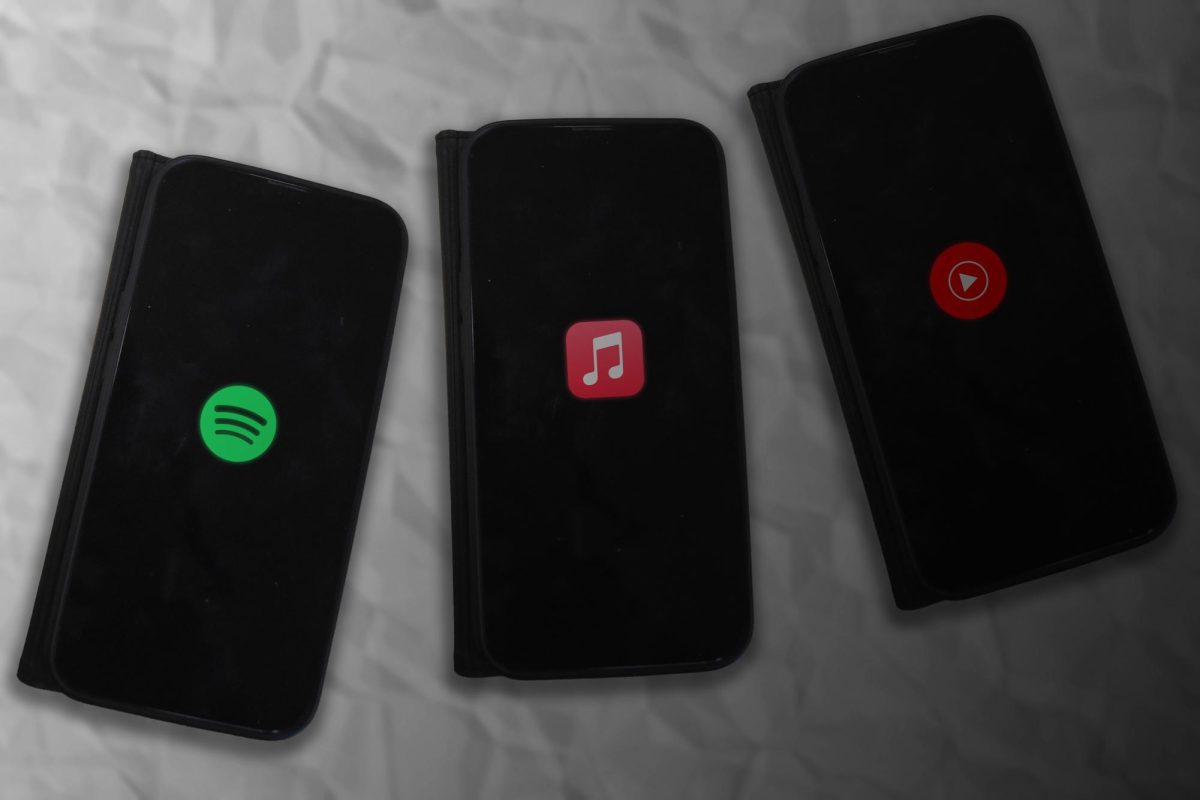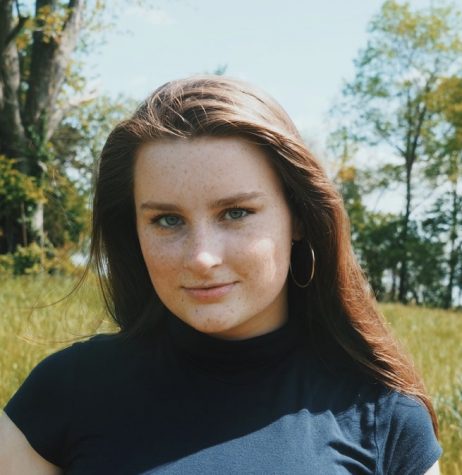[a beat comes in]
Before we begin, a quick disclaimer. This episode will focus solely on facts and personal stories, in the hopes of humanizing the tragedy of gun violence in St. Louis. It is never our goal to perpetuate dangerous stereotypes, and we want to be clear that when we discuss the problem of gun violence, we are blaming the system, not the individuals who are affected by it. We are conscious of the language used in this episode, and acknowledge that no matter who the victims of these tragedies were, the violence was entirely undeserved.
[beat ends]
In the days and weeks following Carieal’s death, news sources pumped out headlines of the “One of a kind” coworker who “Could make anyone laugh.” Johnetta’s experience with her daughter was no different.
I just want people to know, you know, my daughter, she, she didn’t just touch me, you know, she touched so many different lives from, from her friends to her siblings, you know, to other family members in our, in our family. And, you know, to lose her the way that we lost her. Um, it was just very traumatic, you know, for everyone. And her siblings are, you know, coping, or trying to cope now. And I just want the world to know that, you know, my child was a very giving person with a big heart. She was witty, she was a little jokester, you know, and people miss that, you know, because sometimes we are coming from places that were struggling with things and nobody knows what we’re struggling with. And just to have someone you know, to walk in the classroom, and you know that that person is going to be there. And they make you laugh or smile every single day, you know, and deep down, they don’t know what you’re going through. But you know what you’re going through, and they make your days better, you know, that’s missed, and so missed from the world. So, you know, I just want the world to know what, what type of person my child was. And, you know, all of her–the things that she’s done, you know, from basketball to art to, you know, everything. She was just well-rounded with so many things.
But in the two to three days where Carieal had not been identified, other news outlets had some unsavory things to say. One outlet wrote a story titled, “A Girl Was Killed Two Days Ago in St. Louis and Nobody Has Identified Her.” They ended their story saying, “No one has come forward to claim her body. Maybe no one has noticed she’s missing.” Stories like these quickly reached the Doss family, and, as mentioned in episode one, painted a picture of a missing child and a family who didn’t care.
Honestly, I wasn’t even on the internet. I wasn’t even on Facebook or anything. My 15 year old daughter happened to be on Facebook and she said that she’d seen something with Real STL news. And they were talking about how Carieal was a runaway, and they were saying something about sex trafficking. I mean, it was just a whole bunch of things that they were saying, you know, [that] she, she doesn’t have a mother or father, it was so far from the truth. And my daughter was so upset about it, you know, and she made a post on my page. And she was just like, you know, anybody that knows my mother, knows doggone well that she loves her kids. And my sister was not this, my sister was not that, you know, and so she kind of cleared the air. But, you know, the media, I feel, painted a picture of her not, you know, like, no one was looking for her. No one had, you know, um, came forward to say who she was. And it was so far from the truth. Because, you know, if you don’t know, something, you just don’t know, how are we supposed to know to look in St. Louis City if she left in St. Louis County? You know, so it was just, we didn’t know, but we were looking for her in the wrong places.
The judgement Johnetta experienced by the media reminded her that in these situations, families of victim’s and the public alike must be wary of information being shared so rapidly after an incident like this.
For the Doss family, the media’s description of Carieal bore no resemblance to her actual features. The picture of Carieal’s clothing in the article was the only giveaway.
You have to be careful when you’re, when you’re listening to the media, because the media doesn’t always, you know, tell you the truth. You know, they paint this picture. If it wasn’t for the clothes, we probably, we’d probably be still looking for my daughter to this day. You know what I mean? Because we had no idea. Um, you know, the, what they were saying was, she was 13 to 16. She was 18. You know, “braids,” No braids, you know, and it was just, she was, she was 100 pounds. You know, they were like, ‘Oh, she was’ because no, I’m sorry, she was ‘between 80 pounds 80 pounds and 95 pounds,’ [but] she weighed 110. You know what I mean? So, I would have, I had not, you know, I would have never looked at that and said that was my child. If it was not for the clothes and people, you know, and her friends on Facebook..
I didn’t bat back because I felt like, you know, one, I have a different battle to fight, you know, me trying to straighten up people or put them in their right places, or, you know, that wasn’t for me at that time. You know, because I was dealing with the fact that I lost my child, so I could care less about who was saying what, you know, and I feel like, you know, at the end of the day, the truth needs no support. Anyone that knows me knows my child [and] knows my other children, know that I have always played a part in their life. They have always been with me, you know, and there was no homelessness, there was no trafficking. It was none of that, you know, and it’s just, people paint pictures, to, like, make their own stories, you know, and my daughter was simply saying that people were on there making up, like literally, making up stuff. I didn’t want to see it. Because I was, I was in a different space. I was just hurt, you know, I was just missing my child just wanted her. And so, for me, it was it was a totally different atmosphere. It didn’t matter to me. All I wanted and all I was set on is ‘Who did this? Why was it done? And why was it done to my child?’ It was so many different levels of pain that I was going through. And for me to sit on Facebook and try to combat with people, it just wasn’t something that I was willing to do.
The St. Louis Post-Dispatch reports that the city’s homicide rate hit 87 killings per 100,000 residents in 2020, the year Carieal was killed, which is the highest on record since 1970. But this data is not created in a vacuum. America, and the City of St. Louis specifically, has a cycle of violence that runs parallel with the cycle of poverty, and its roots can be drawn all the way back to America’s response during the post-civil war Reconstruction Era. More modern impacts to this racial disparity in crime can be blamed on redlining, which keeps communities that are largely African American, in poverty. Redlining is almost entirely at fault for the high crime disparity we see in the Black community, but we can also point fingers at racial discrimination by America’s criminal justice system. Johnetta acknowledges these as factors that keep this cycle of violence, cycling.
We have a lot of children that are growing up without parents, without being in a two family home, and just a single parent home. We have children that are out here that are young, young 15, you know, 14, they are raising themselves, and they are literally going off of what they see on the videos, you know, hip hop videos and listening to the raps and what these people are saying, you know, and that’s how they are. In their mind, that’s how life is supposed to be. So when you have a child, that is pretty much leading, the blind leading the blind. What can a 15 year old 14 year old child teach himself teach herself, you know? So these are the things they don’t know anything about morals and values that if someone is not putting it in them, they don’t know anything about what they should and shouldn’t do, if someone is not telling them. You know, a lot of people think that ‘well, that’s common sense.’ But your common sense, and someone elses common sense is two totally different things. So to think that someone would know something because of their age, is very feeble-minded. You know, if a person hasn’t been taught something, and they don’t know, they just don’t know, it doesn’t matter what age you are, you just don’t know. And so what we’re dealing with, you know, back in the 80s, and 90s, crack cocaine was very prevalent in our area.
And we know that drugs are everywhere, but I’m speaking about where I come from. And so, the area that I was in and where I grew up in, it was definitely drugs in the area. And, we’re just, you are speaking to, to a person that has seen a lot, you know. I’ve seen, you know, a woman, you know, give her body up for drugs, give her kids up for drugs. So now we are in, where are we at right, right now. And these are children. I was born in that era, the 1990s, late 90s, you know, early 2000s, you know, now we’re dealing with a child that was actually born as a crack child, you know, so how, how do you, how do you grow up and fix that problem, If you- if they don’t get help? You know, so we’re growing up in destruction and disruption, you know, and nobody is fixing the issue, because it starts in court, you know. We have to find out where it starts from a majority of the time, you know, you’re looking at kids that they don’t have a mother, they don’t have a father, the fathers are in the penitentiary, or they’re deceased; But mothers are drug addicts, or they’re just out in clubs or want to be, you know, tied up with a man that doesn’t accept their children. So you’re dealing with all of these dysfunctions. And the children are coming up in this, and they think that they know that this is how it’s supposed to go. Well, if you you know, go back to again, if nobody ever teach you anything, you don’t know. So now we’re dealing with the bigger problem. We’re dealing with children that are just out of control, but they’re out of control, because they have no guidance. So now we’re we’re going in with the gunplay, they’re listening to the hip hop. They’re listening to everything that these rappers are saying, and they’re trying to live this life and they want to be seen, they want to be heard, but they’re asking for the wrong type of attention. You know, they want attention, but they they’re asking for the wrong type of attention. And then when gangs get involved, and they get a hold to them, you know, everything goes left, you know. So that’s, that’s the biggest issue that we’re dealing with right now in St. Louis city.
Still, Johnetta tried to piece together the story, in hopes of comprehending the incomprehensible crime committed against her daughter. Understandably, at times this pain could only be quelled with thoughts of revenge.
At first, honestly, I thought Carieal may have fell asleep at a friend’s house, and she may have turned her phone off or something. I was never thinking the worst on that. But what was going through my head was, why? You know, I just I was, I just wanted to know why, I wanted to know why. Anybody that knew Carieal knew that she would give you the shirt off her back, like, literally and walk away with nothing. Um, but I was trying to figure out, she had no enemies, you know, everybody loved the girl. Um, and, and I kept saying, why? Or, what happened? You know, like, what was going through my head [was] like, what happened? Was she, what was she doing down there? You know, like, who does she know, down there? Um, I, it was so many different things that were going through my head that, for me, it was just, it was so much. It was so much, and to find out where she was shot at, there, then that changed the dynamics of things because it really changed the dynamic of things because I was like, ‘Okay, well, you know, being shot from the back, you know, that, to me indicated, she had no, no worries of that, or it didn’t even– for her to turn her back.’ You know what I mean? I just felt like it she she had no way of knowing it was coming, you know, so it was so many different things that was going through my head on this, why my child: who did it, what for, you know, we know that her that her cell phone was stolen, we do know that we know that her money was taken. We do know that. And, and it was like, who would want to do this? Who [would] want to rob my child and kill her? So it was just a lot of different things that were going through my head at that time. Revenge, um, who, who whoever did it, I’m definitely coming after, coming after them. You know, and that was, those are all feelings that, you know, any parent will feel by being violated the way that I was violated.
[string music comes in]
That was episode two of the three part series “Carieal Doss, Forever 18.” Check back for the final episode, which will detail the impact of Carieal’s death on her mothers mental health. We will also discuss stigma surrounding mental health in the Black community, as well as Johnetta Doss’s book and other projects that she is creating in remembrance of Carieal.
This is It’s Not Black and White.
[music cuts]




![Sitting courtside before a junior varsity girls’ tennis match, senior Tanisi Saha rushes to finish her homework. Saha has found herself doing academic work during her athletic activities since her freshman year. “Being in sports has taught me how to stay organized and on top of my schoolwork. [With] a busy practice and game schedule, I’ve learned to manage my homework and study time better,” Saha said.](https://pwestpathfinder.com/wp-content/uploads/2025/11/DSC_0022-1200x800.jpg)
![Sophomore Maryem Hidic signs up for an academic lab through Infinite Campus, a grading and scheduling software. Some students enjoyed selecting their responsive schedule in a method that was used school-wide last year. “I think it's more inconvenient now, because I can't change [my classes] the day of, if I have a big test coming and I forget about it, I can't change [my class],” sophomore Alisha Singh said.](https://pwestpathfinder.com/wp-content/uploads/2025/10/DSC_0012-1200x801.jpg)
![Senior Dhiya Prasanna examines a bottle of Tylenol. Prasanna has observed data in science labs and in real life. “[I] advise the public not to just look or search for information that supports your argument, but search for information that doesn't support it,” Prasanna said.](https://pwestpathfinder.com/wp-content/uploads/2025/10/DSC_0073-2-1200x800.jpg)
![Junior Fiona Dye lifts weights in Strength and Conditioning. Now that the Trump administration has instituted policies such as AI deregulation, tariffs and university funding freezes, women may have to work twice as hard to get half as far. "[Trump] wants America to be more divided; he wants to inspire hatred in people,” feminist club member and junior Clara Lazarini said.](https://pwestpathfinder.com/wp-content/uploads/2025/05/Flag.png)
![As the Trump administration cracks down on immigration, it scapegoats many immigrants for the United States’ plights, precipitating a possible genocide. Sophomore Annabella Whiteley moved from the United Kingdom when she was eight. “It’s pretty scary because I’m on a visa. When my visa expires next year, I’m not sure what’s going to happen, especially with [immigration] policies up in the air, so it is a concern for my family,” Whiteley said.](https://pwestpathfinder.com/wp-content/uploads/2025/05/DSC_0077-7copy.jpg)
![Shifting global trade, President Donald Trump’s tariffs are raising concerns about economic stability for the U.S. and other countries alike. “[The tariffs are] going to pose a distinct challenge to the U.S. economy and a challenge to the global economy on the whole because it's going to greatly upset who trades with who and where resources and products are going to come from,” social studies teacher Melvin Trotier said.](https://pwestpathfinder.com/wp-content/uploads/2025/05/MDB_3456-1200x800.jpg)



![Some of the most deadly instances of gun violence have occurred in schools, communities and other ‘safe spaces’ for students. These uncontrolled settings give way to the need for gun regulation, including background and mental health checks. “Gun control comes about with more laws, but there are a lot of guns out there that people could obtain illegally. What is a solution that would get the illegal guns off the street? We have yet to find [one],” social studies teacher Nancy Sachtlaben said.](https://pwestpathfinder.com/wp-content/uploads/2025/01/DSC_5122-1200x800.jpg)
